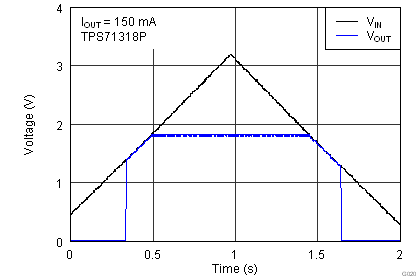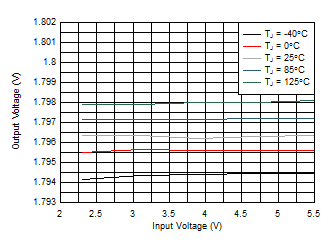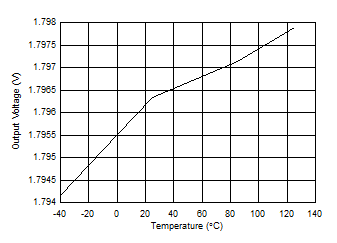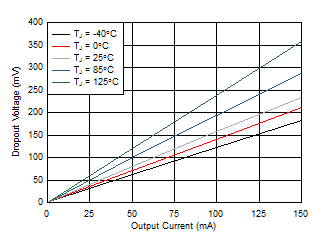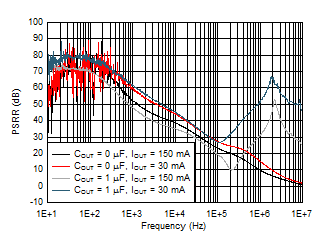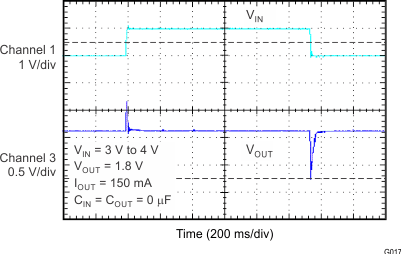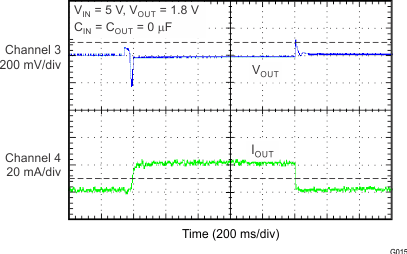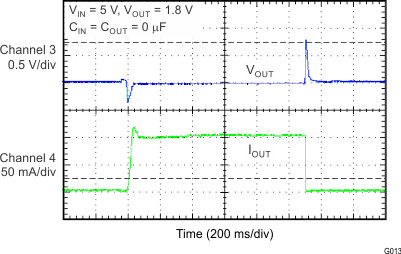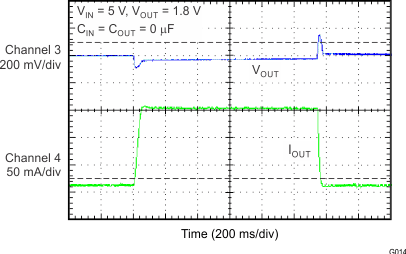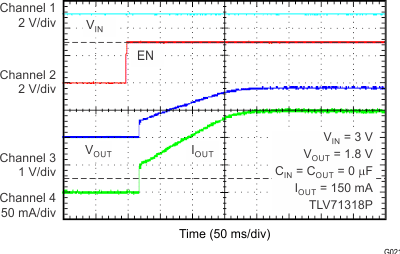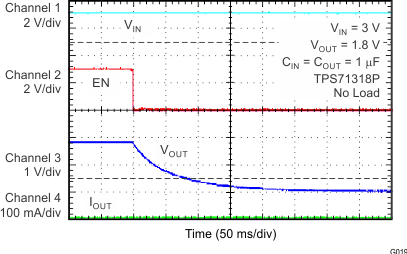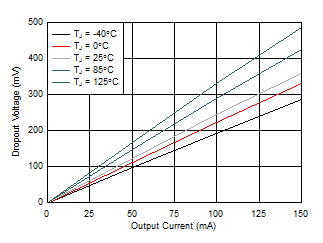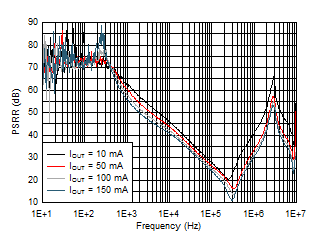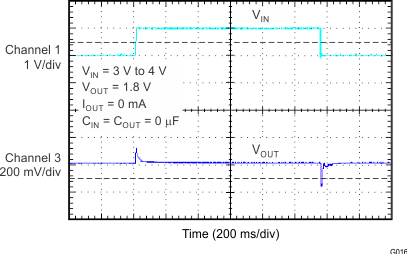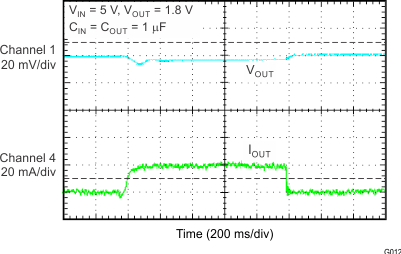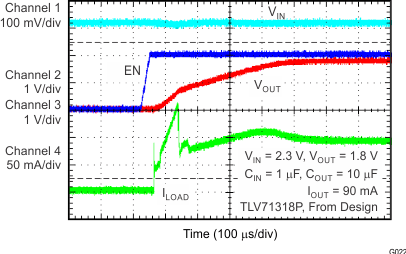SBVS195F September 2012 – August 2019 TLV713
PRODUCTION DATA.
- 1 Features
- 2 Applications
- 3 Description
- 4 Revision History
- 5 Pin Configurations and Functions
- 6 Specifications
- 7 Detailed Description
- 8 Application and Implementation
- 9 Power Supply Recommendations
- 10Layout
- 11Device and Documentation Support
- 12Mechanical, Packaging, and Orderable Information
Package Options
Mechanical Data (Package|Pins)
Thermal pad, mechanical data (Package|Pins)
- DQN|4
Orderable Information
6.6 Typical Characteristics
Over operating temperature range (TJ = –40°C to 125°C), VIN = VOUT(nom) + 0.5 V or 2.0 V (whichever is greater), IOUT = 10 mA, VEN = VIN, COUT = 1 µF, and VOUT(nom) = 1.8 V, unless otherwise noted. Typical values are at TJ = 25°C.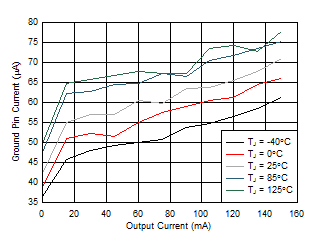
IOUT and Temperature
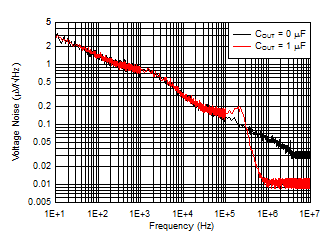
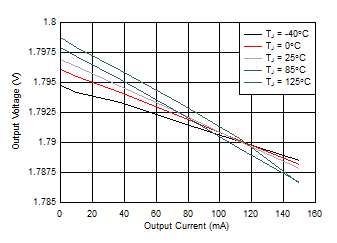
IOUT and Temperature
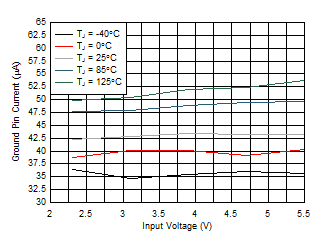
VIN and Temperature
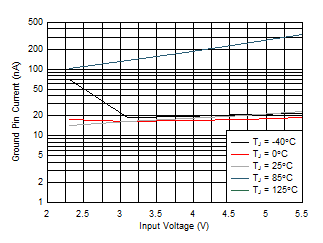
VIN and Temperature
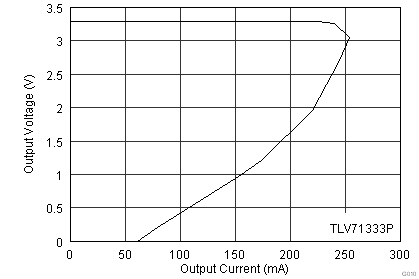
(Foldback Current Limit)
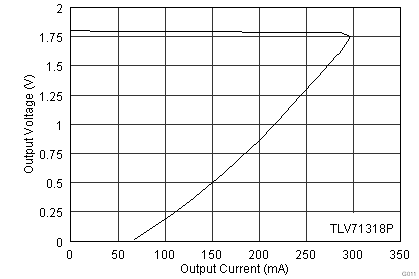
(Foldback Current Limit)
